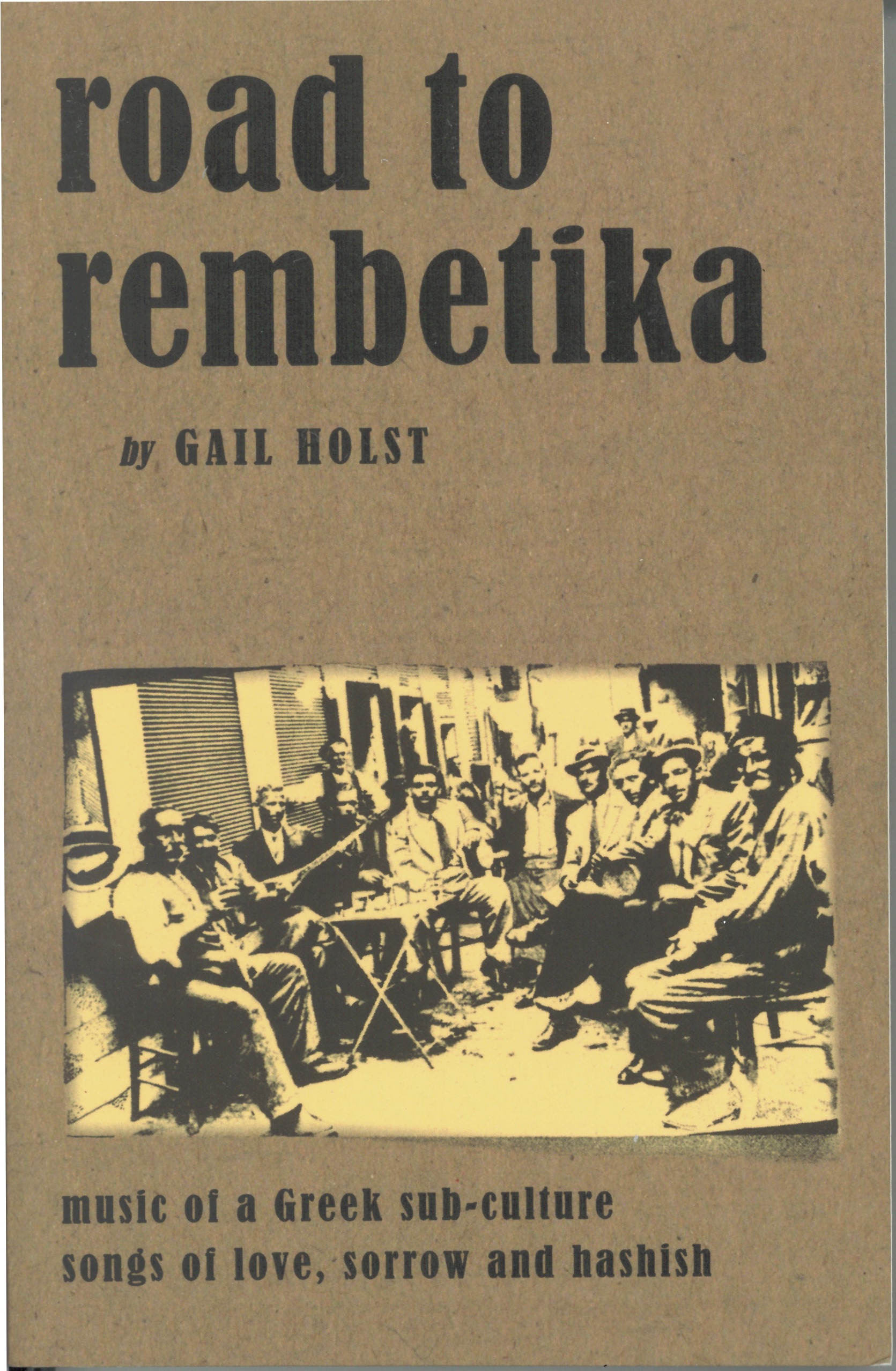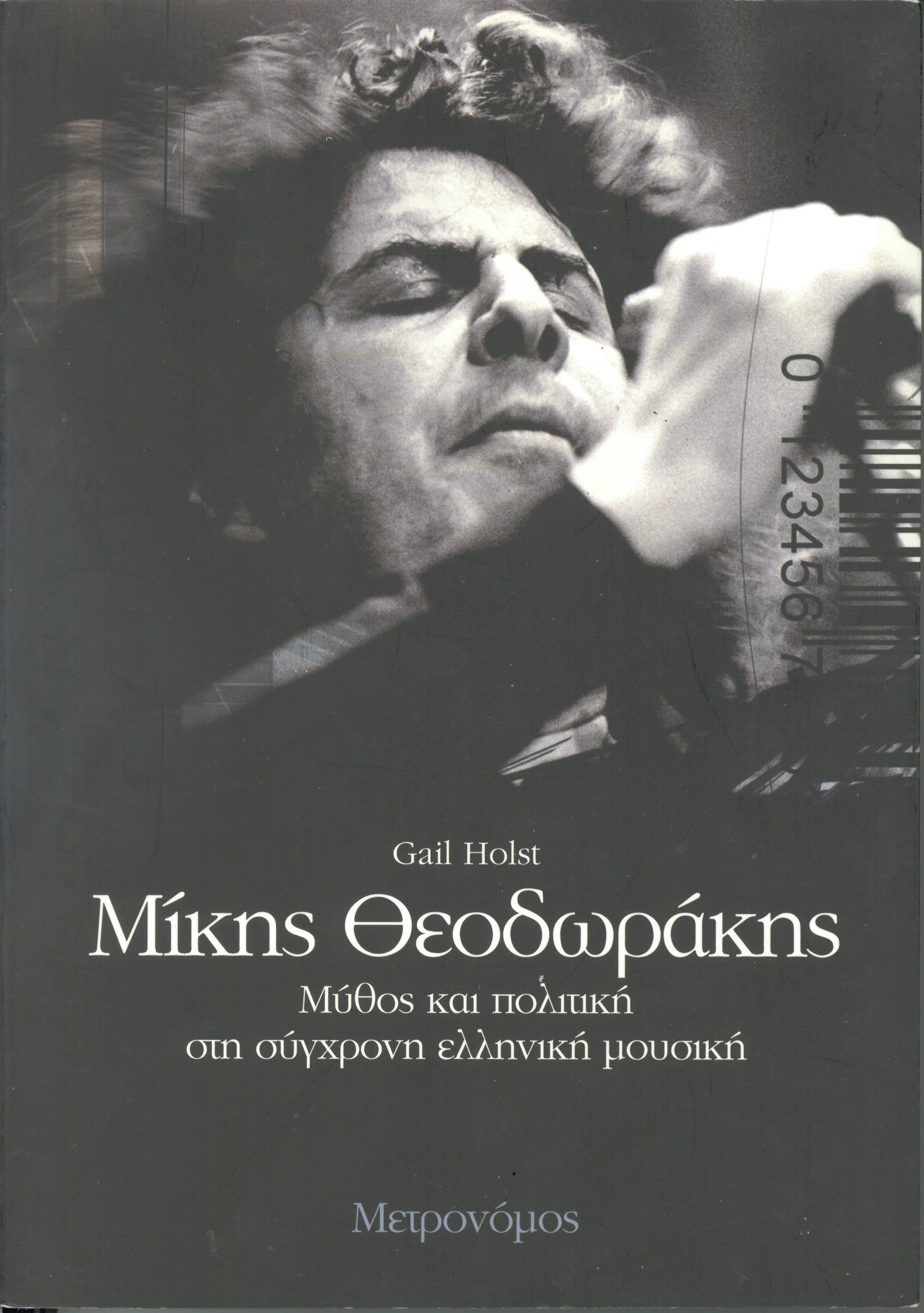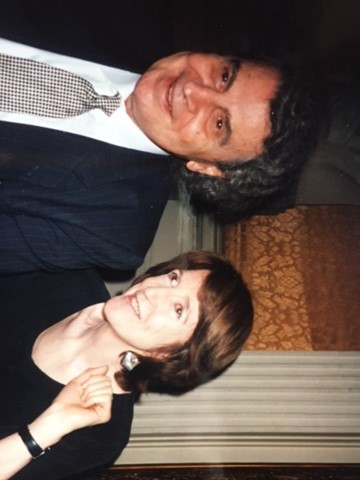Holst-Warhaft played harpsichord with Mikis Theodorakis’s ensemble in 1975 and again in 1978, when the Art Theater of Greece performed a modern version of Aristophanes’ The Knights with music by Theodorakis in the ancient theater of Epidaurus. She has continued to work with Mr Theodorakis, translating titles of his archive and lyrics of his songs, writing articles about his work, and translating supertitles for a performance of his opera Elektra at Carnegie Hall. She has interpreted for him at press conferences and other events in Australia and the US.
She also performed with the composer Dionysis Savvopoulos in a musical theater piece based on Aristophanes’ The Acharnians. After playing with his company in an Athens nightclub, she went on a tour of the Greek countryside before recording the music in Athens with the composer and his musicians.
You can hear the album at: goo.gl/3G6NQl
Holst-Warhaft toured the world, playing harpsichord with singer/song-writer Mariza Koch. Ms. Koch and her musicians performed in China, India, Canada, Australia and the US, performing at the Lincoln Center, Symphony Hall and other such venues. It was Mariza Koch, a native of Santorini, who taught Holst-Warhaft take a serious interest in the music of the Aegean. Holst-Warhaft has been writing Mariza’s biography, which she hopes to publish soon. She is also working on a book about Greek island music.
After moving to Ithaca, NY, Holst-Warhaft continued to be active in Greek music, organizing concerts, performing with the Cornell Middle Eastern Ensemble and with other artists.Holst-Warhaft played harpsichord with Mikis Theodorakis’s ensemble in 1975 and again in 1978, when the Art Theater of Greece performed a modern version of Aristophanes’ The Knights with music by Theodorakis in the ancient theater at Epidaurus. She has continued to work with Mr Theodorakis, translating titles of his archive and lyrics of his songs, writing articles about his work, and translating supertitles for a performance of his opera Elektra at Carnegie Hall. She has interpreted for him at press conferences and other events in Australia and the US.
She also performed with the composer Dionysis Savvopoulos in musical theater piece based on Arisophanes’ The Acharnians. After playing with his company in an Athens nightclub, she went on a tour of the Greek countryside before recording the music in Athens with the composer and his musicians.
Holst-Warhaft toured the world, playing harpsichord with singer/song-writer Mariza Koch. Ms. Koch and her musicians performed in China, India, Canada, Australia and the US, performing at the Lincoln Center, Symphony Hall and many prestigious venues. It was Mariza Koch, a native of Santorini, who made Holst-Warhaft take a serious interest in the music of the Aegean. She has been writing Mariza’s biography, which she hopes to publish soon. She is also working on a book about Greek island music.
After moving to Ithaca, NY, Holst-Warhaft continued to be active in Greek music, organizing concerts, performing with the Cornell Middle Eastern Ensemble and with other artists.
Road to Rembetika: Music of a Greek Sub-culture. Songs of love, sorrow and hashish
First published 1975, Athens: Anglo-Hellenic publishing (Denise Harvey), 2nd edition 1977, 3rd edition 1983, reprinted with amendments 1989, 1994. Fourth edition 2006, reprinted 2014.
Greek edition, 1977 (Denise Harvey), new editions 1980, 1983, 1991, 1995, 2001.

German edition, trans. Renate Gerhardt, Gerhardt Verlag, Berlin. 1979
Turkish edition, trans. V. Celik Akpinar, Pan Publishing, Istanbul, 1993
French edition, trans. Etienne and Monique Lesourd, Les nuits rouges, Paris, 2001. 2nd edition, 2004.
Croatian, Hebrew and Italian editions are forthcoming.
Theodorakis: Myth and Politics in Modern Greek Music
Adolf Hakkert, Amsterdam, 1979.
First Greek edition, trans. Stamatis Kraounakis, Lizy Tsirimokou and the author, Athens, Andromeda, 1980.

2nd edition, Metronomos, Athens, 2014.


Nisiotika: Music, dances and bitter-sweet songs of the Aegean islands


This book is about the living tradition of Greek island music. Nisiotiotika — which means ‘island-like’ — has come to define the music and songs that are played and sung at festivals and celebrations on the islands of the Aegean. Above all, this is music to be danced to, and as the book reveals, it is the dancers who call the tune.
The songs tell of the sea and those that engage in often dangerous sea trades, of love and of pretty girls, sometimes of historical events, but also of sadness and separation, of women who wait in fear for their husbands and sons to return from long voyages or faraway lands. Most of the songs are not very old and many probably date no earlier than the late 18th or early 19th century, although they borrow musical and poetic motifs from older forms of Greek folk song. The most common instrumental accompaniment to them is the violin, often played together with a laouto, or folk lute, but the bagpipes and the santouri, or hammered dulcimer, are also popular.
Like the rembetika, the songs of underground and urban Greece, the nisiotika only became pan-Greek music after the islanders emigrated, initially to the US and then later to Athens, when their songs were recorded and where a wider audience for their music was created.
Combining research by pioneering musicologists and her own research into recordings, the songs themselves and through interviews, Gail Holst-Warhaft has turned the same discerning and loving eye on this subject as she did in her now classic book on rembetika, Road to Rembetika.
The text is illustrated with many photographs and includes a collection of the songs in Greek with English translation en face.
For videos for Nisiotika songs and dances, click here.
Ένα ταξίδι στο ρεμπέτικο για μικρούς και μεγάλους (A Journey into the Rembetika for Young and Old)




Click here to listen to a radio interview about Greek music.
Mikis Theodorakis, His Music and Politics (Durrell Studies 6)

This is the only comprehensive musical biography in English of Mikis Theodorakis (1925-2021), the revolutionary Greek composer. The first edition (1980) was written with the assistance and support of Theodorakis himself; this new edition was commissioned after Theodorakis’ death and extends the assessment of his work to the operas, symphonies and other works composed since 1980. As a political figure in modern Greece, Theodorakis embodied the spirit of resistance to the abuse of authority, from the Nazi occupation of his country and the ensuing civil war to the military dictatorship of 1967-74 and beyond. Based on the author’s personal friendship and collaboration with Theodorakis, this musical biography is both a passionate and an authoritative account of the life-work of a man who became a popular hero in an age of anxiety.
I had become aware, and a huge admirer, of Gail’s 1980 work on Mikis Theodorakis. Her personal friendship with him, her musicianship and her capacity to write engagingly and with passion about his music and his musical personality, was impressive. When Theodorakis died, in September 2021, I asked Gail to consider a new edition, since the work Theodorakis had undertaken between 1980 and 2000, in particular – including four operas and also involving the ‘rediscovery’ of his early piano works and chamber music – was of enormous importance and demanded a new study along the lines of Gail’s original.
The result, forty years later, encompasses the new works and allows Gail Holst-Warhaft (in 1980, Gail Holst), to give a thorough reconsideration of the man whom she knew and befriended and whose work remains a vital element in contemporary Greek culture. As Gail shrewdly observes, the reputation of Theodorakis as a composer principally for the voice, the setter-to-music of the poetry which was closest to his heart, has allowed his more ‘symphonic’ work and his chamber music to remain not undiscovered, but appreciated to a far lesser extent than it warrants. I am confident that Gail’s advocacy, in this new edition, of this less-appreciated work will ensure that due attention is paid to it by musicologists and, more importantly, by the listening public.
Book Review by John Lucas
